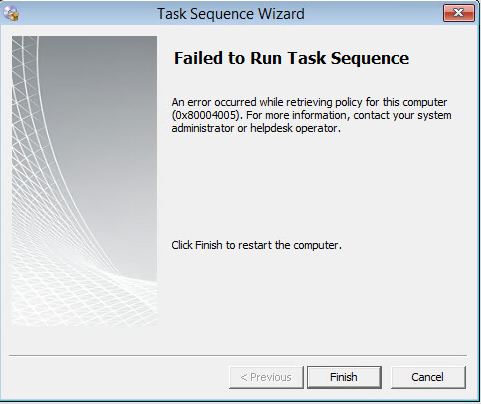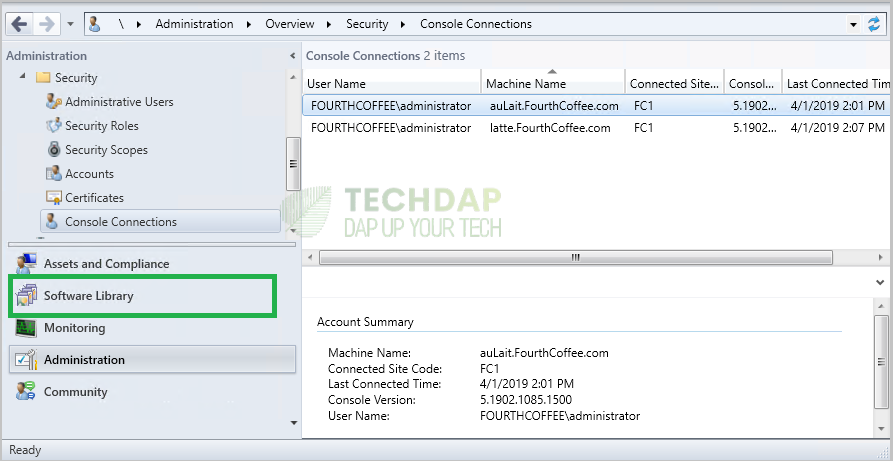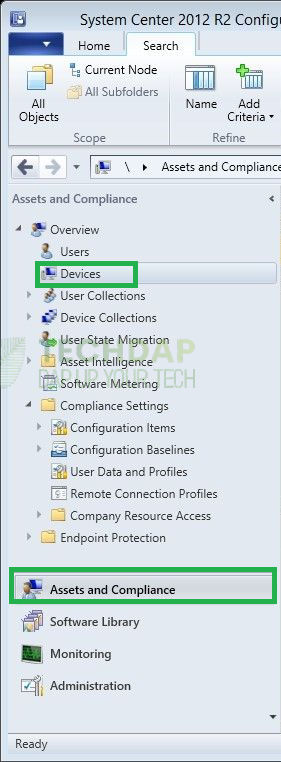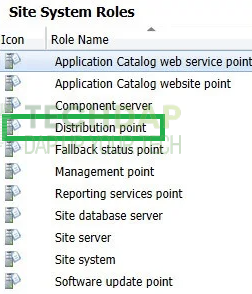Fixing the SCCM Task Sequence Failed to Run Error 0x80004005
Typically, the System Center Configuration Manager or “SCCM” is used for a variety of tasks that are constantly running in your Windows background and it isn’t a bother to you. However, in certain cases, you might get the “Failed to run Task Sequence Error 0x80004005” which can prevent the proper deployment of operating systems on new machines/systems.

Mostly, the error is generic and can have many possible reasons due to which it is triggered and in this article, we will be examining these reasons in depth. In addition to that, we will also be taking you through the step-by-step guide to fix this issue with solutions that you will be able to deploy yourself without any professional help.
Causes of Failed to Run Task Sequence Error 0x80004005:
As we said before, the error is usually generic and points typically towards an unspecified error. However, upon our investigation, we were able to conclude that the following must be the most prominent reasons why it occurs in the first place.
- Invalidated Boot Image: Sometimes, while deploying the operating system on the new machine, you might not have properly validated the boot image that is associated with the deployed task sequence. This can cause the task sequence to a glitch which can end up generating the error 0x80004005.
- Drive Formatting: There have been cases where the drive that the operating system is being deployed in, wasn’t formatted properly. This can cause the error in question with the task sequence and prevent you from being able to deploy the operating system.
- Device not Imported Properly: In certain cases, the Device on which the operating system is to be deployed, might not have been imported properly along with its correct SMBIOS GUID and other information.
Fixing the Error 0x80004005 with SCCM Task Sequence:
Method 1: Check Task Sequence Settings
- First of all, launch into the configuration manager console from SCCM.
- Click on the “Software Library> Operating Systems>Task Sequences” options from the left side of the window each of which will expand after their predecessor is clicked.
Selecting “Software Libraries” from the SCCM Console - Now, take a look at the task sequences list that you have deployed, from this, right-click on the existing one and select the “Properties” option from the menu.
- From the new tab that opens up, click on the “Advanced” button, and here, look over to the option listed under the “Use a Boot Image” checkmark, which should contain the boot image that has been added to the task sequence. If it doesn’t match the version you want to deploy for production, click on the “Browse” option at the end of the field and select the matching version.
Ensuring proper boot image is selected - After selecting the matching version, click on the “Apply” button and close the window.
- Check to see if the SCCM Task Runs properly and that the Error 0x80004005 is fixed.
Method 2: Formatting the Drive
Sometimes, the task sequence can only be deployed after the drive has been formatted. The drive can be formatted after deploying some commands inside the command prompt. For that, we can follow the steps that have been listed as follows.
- There might be a command prompt option in the selected Boot Image or you can press the F8 key to launch the command prompt.
- From here, you can deploy the following commands one by one to completely format the drive which will allow you to then deploy the Task Sequence.
Diskpart List disk Select disk 0 (Remember to select the disk that you want to format, the previous command will list all available ones along with their number) Clean (This will clean the disk) Create partition primary (Creates a primary windows partition) Select partition 1 Format quick fs=NTFS (Formats the partition in NTFS Format) Assign Letter F (Assigns the letter F to the partition) Exit
- Now that you have successfully formatted the partition, try to deploy the task sequence and check to see if the error is now fixed.
Method 3: Add Computer with SMBIOS GUID Information
From the Bios or the Uefi of the computer, you can extract the SMBIOS information which is a unique identification key that can be used to identify the computer. Later on, we can add this information to the SCCM Console to advertise the computer for operating system deployment. To do this:
- First of all, on the machine on which the operating system is to be deployed, collect its SMBIOS information. For that, you can use the following command in the console.
wmic csproduct get uuid
- Now, launch into the SCCM console and make sure to remove the device that is facing this issue from the “Assets & Compliance > Devices” options.
Selecting “Assets and Compliance” - After doing this, add a “Newly Imported Computer” to the collection which will allow you to advertise the computer for the deployment of the operating system on it.
- Make sure to enter the collected SMBIOS GUID in the presented option on the screen.
- After completing the above steps, make sure to restart the machine on which the OS is to be installed and reinitiate the task sequence which should fix the Failed to run Task Sequence Error 0x80004005.
Note: If the computer doesn’t reboot successfully from the PXE, make sure to re-examine the SMPXE.log file from the computer that is hosting the PXE Service Point. Make sure that you have collected the SMBIOS GUID beforehand as stated in the first step of the solution.
Method 4: Check Bios Time on Device
In certain cases, the Bios time on the devices might be incorrect or improperly configured which can lead to a Task Sequence error. Therefore, we suggest that you ensure that the Bios time is correct on the devices, and if it isn’t, ensure that you correct it before proceeding with initiating the task sequence.
Method 5: Change VM to EFI
Some users that we talked to who were facing this issue found that the VM that they built in order to capture the boot image was set to Legacy instead of EFI. Legacy and EFI systems are different as they use different types of partitioning and legacy is more prone to errors as it is an older, more traditional form.
Method 6: Ensure Certificate hasn’t Expired
Sometimes, the self-signed certificate the machine uses might have expired due to which you are getting this error with the task sequence. In order to fix that, we can deploy the following steps
- Launch into the SCCM console and navigate through the following options “Administration>Overview>Site Configuration>Servers & Site System Roles”.
- Click once on the server that is responsible for serving the PXE Boot and then right-clicks on the “Distribution Point” option that is listed in the list of options below.
Selecting the “Distribution Point” option - Select “Properties” from the menu and then click on the communications tab.
- Verify the expiration date from the options and create a new certificate if it has expired.
- Check to see if this fixes the “Failed to run Task Sequence Error 0x80004005” error.
Method 7: Error Identification and Resolution
If you have been unable to resolve the error thus far, we can try to check which step the error occurs in during the process and then try to isolate & fix the issue from there. For that:
- Launch into the SCCM console and navigate through the “Monitoring>Overview>Deployments” options.
- From here, select the task sequence that the error comes up with by clicking on it and then click on the “View Status” button that is listed on the screen below.
- Now, identify the machine that the error occurs on by clicking on the “Error” tab and then left-click on it from the “Asset Details” dropdown.
- Click on the “More Details” button and a new pop-up with all the processes and their associated Stop codes will be listed.
- Look at the stop codes to identify the machine that might’ve caused the issue and after identification, we can move on to deploying the steps that are relevant.
For Driver-Related Cause:
Make sure that the drivers are being installed on the correct machine and also ensure that they are distributed properly. Also, make sure that there isn’t an issue with the command line if they are being applied manually and that the syntax is properly followed.
For Application-Related Cause:
- Launch into the SCCM console and navigate through the “SoftwareLibrary>Overview>Application Management>Applications” options.
- Locate the application that you identified and right-click on it.
- From the menu, select the “Properties” button and then move on to the “Deployment Types” tab.
- From here, select “Application” and click on “Edit”.
- Click on the “Programs” tab and then make sure that the command listed inside the “Installation Program” is correct and that there aren’t any syntax mistakes.
These solutions should typically be vital in fixing the Failed to run Task Sequence Error 0x80004005. However, if you still fail, you can contact us using our form.





